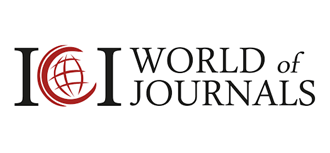Association of Anal Sphincter Tears with The Quality of Life in Women. The Prognostic Factors
Nikoleta Tsinisizeli1,2*, Anna Deltsidou1, Aikaterini Lykeridou1, Anastasia Bothou1 and Giannoula Kyrkou1
1Midwifery Department, University of West Attica
2General Hospital of Nikaia “Agios Panteleimon”
Submission: September 13, 2024;Published: September 23, 2024
*Corresponding author: Nikoleta Tsinisizeli, Midwifery Department, University of West Attica, Greece, Email: nikoletatsinisizeli@gmail.com
How to cite this article: Νikoleta Tsinisizeli, Anna Deltsidou, Aikaterini Lykeridou, Anastasia Bothou and Giannoula Kyrkou. Association of Anal Sphincter Tears with The Quality of Life in Women. The Prognostic Factors. J Gynecol Women’s Health 2024: 27(1): 556202. DOI: 10.19080/JGWH.2024.27.556202
Abstract
Introduction: Perineal injuries affect hundreds of thousands of women in Europe and millions worldwide every year. Vaginal births are associated with causing some form of trauma to the genital system.
Aim: The aim of this literature review is to investigate and inform the readers about the current literature on the subject of the prognostic factors blamed for causing vaginal and perineal ruptures and to correlate them with the impact on the woman’s quality of life.
Methodology: The present literature review was based on the PRISMA method (Preferred Reporting Items for Systematic Reviews and Meta-Analyses), and aggregated data published in international literature. The electronic databases used were PubMed, Scopus and Google Scholar.
Results: The search identified 123 articles. The titles and abstracts of the articles were re-evaluated and those that were not related to the subject were excluded.
Conclusion: The prediction of risk factors should precede the obstetric practice. Both early intervention and effective treatment constitute the best practice. Weighing the benefits and risks of providing proper counseling to women of childbearing age by obstetricians and midwives should be a key goal of specialists in the prevention of severe perineal trauma.
Keywords: Perineal, Obstetric Injuries, Quality of life and Risk factors
Abbreviations: ACOG: American College of Obstetricians and Gynecologists; OASIS: Obstetric Anal Sphincter Injuries
Introduction
Morbidity related to perineal trauma is an international issue. Perineal injuries affect hundreds of thousands of women in Europe and millions worldwide every year. Vaginal births are associated with causing some form of trauma to the genital system. It is estimated that vaginal tears occur in 85% of primiparous women who give birth by spontaneous vaginal delivery [1]. The anterior perineal wound can be located on the lips of the vulva, in the area of the urethra, clitoris and anterior area of the vagina and usually is associated with low morbidity. Posterior perineal trauma is found in the posterior area of the vagina, the muscles and body of the perineum and the sphincter anus [2]. Injury to the perineum is common in vaginal delivery. It occurs in 65-85% of vaginal deliveries with a higher incidence in primiparous women (90.8%) compared to multiparous women (68.8%) [3]. However, almost 20% of 3rd and 4th degree tears are not diagnosed and are not repaired during the postpartum period which is associated with long-term consequences in the life of the woman [4]. The soft tissues of the genital tract during childbirth are injured either by spontaneous ruptures or by induced ruptures by performing an episiotomy [5].
The extent of the tear to the sphincter and then to the rectal mucosa determines the severity of the tear. Obstetric injuries are classified from first to fourth degree and this is determined by the anatomical structures involved in this tissue damage. A classification system for obstetric perineal injuries has been proposed initially by Sultan and later by the American College of Obstetricians and Gynecologists (ACOG) [6]. First degree tears include damage to the perineal skin and vaginal epithelium without the fascia and muscles and occur in 50% of cases. In these cases, healing is immediate, while suturing may not be required in minimal situations. Second-degree tears involve the skin and muscles of the perineum, excluding the anal sphincter. Third- and fourth degree tears involve the anal sphincter and anal mucosa respectively and are referred to the literature as OASIS (Obstetric Anal Sphincter Injuries) [7].
Severe perineal trauma, including third-or fourth degree rupture contributes to maternal morbidity and is associated with short term unpleasant conditions such as infection, rupture and long term chronic perineal pain, urinary problems, fecal incontinence and sexual dysfunction accompanied by severe dyspareunia [8,9]. Third-and fourth degree perineal tears range from 5.1% to 8.3% in primiparous women [10]. Primiparous women who experience severe perineal trauma has been found to be at significant risk of developing post-traumatic stress disorder [1]. In particular, a severe perineal trauma may lead to significant and irreversible consequences both in the care of the infant and in woman’s social and sexual life. As a result, these women refuse to plan or accept a new pregnancy [11].
Approximately 50% of women of reproductive age report anal incontinence after anal sphincter injury affecting the woman’s quality of life. Pelvic dysfunctions as a result of obstetric perineal injuries are the main cause of embarrassment, low self-esteem, depression and social isolation of a woman [9]. Severe perineal tears increase a country’s overall health care costs significantly. In the United States the cost during the ages 2007 to 2011 amounted to 83 million dollars [12]. In the United States of America 3 million women will give birth vaginally every year and 4.4% of them will experience a third- or fourth-degree rupture [13]. Annually, during the years 2000 to 2010 in the United Kingdom 30,000 women presented 3rd or 4th degree perineal trauma. This situation increased the healthcare costs at $31,000,000 [14]. Particular attention should be given to the identification of prognostic risks and especially to the mitigation of modifiable risk factors in order to reduce the incidence of obstetric trauma and the subsequent comorbidity.
Risk Factors
Numerous studies have evaluated a variety of prognostic factors, fetal and maternal, modifiable and nonmodifiable, as well as iatrogenic manipulations that may lead to the occurrence of severe perineal injuries. Specifically, Asian ethnicity [15], primiparity, obesity [7], vulvo and anal distance less than 4cm and maternal age older than 35 years due to changes in connective tissue elasticity and weakness of the pelvic floor muscles are the main maternal factors [5,16,17]. In particular, according to the World Health Organization, a BMI ranging from 25 to 29 is defined as overweight, while in obesity the BMI is greater than 30 [18]. Also, according to studies, women of Africa have four times the risk of anal sphincter rupture compared to women of different ethnicity [11]. Abnormal positions, newborn’s weight greater than 4000g or fetal macrosomia and the head circumference of the newborn are fetal risk factors [1,10,17,19].
Risk factors such as vaginal delivery, the use of forceps or vacuum extraction, prolonged second stage of labor, shoulder dystocia, misjudgment of episiotomy, vaginal delivery after caesarean section with a risk rate of 21% (VBAC), median episiotomy [12,17], exogenous oxytocin administration, spontaneous versus directed pushing [20] as well as epidural analgesia constitute the iatrogenic risk factors [2,12,17,21,22]. The timing of pushing during the second stage of labour is under discussion. In early pushing the women accept instructions to push when the cervix is fully dilated while in the case of delayed pushing, the women push when the fetal head projects to the perineum, extending the second stage of labor by approximately one hour [20].
However, great importance should be given to the position of the woman during labour avoiding the lithotomy position with an emphasis on the education of the woman. The rotation of positions during the first and second stage of labor influences the risk factors positively or negatively. Upright and lateral positions during the second stage of labour increase the pelvic diameters in contrast to the supine position which increases the possibility of operative vaginal delivery [12]. Studies have shown that regardless of whether an episiotomy is performed, the use of forceps or vacuum increases the chances of severe perineal trauma [23]. Perineal edema is an independent risk factor for anal sphincter rupture. Specifically, for every ten minutes that the second stage of labor is prolonged, the risk of causing a severe perineal tear increases by 6% and this is likely due to perineal edema [24]. The purpose of this literature review is to investigate the prognostic factors blamed for causing vaginal and perineal ruptures and to correlate them with the impact on the woman’s quality of life.
Methodology
The aim is to inform readers about the current literature on the subject of prognostic factors in the occurrence of perineal trauma. The present literature review was based on the PRISMA method (Preferred Reporting Items for Systematic Reviews and Meta-Analyses), and aggregated data published in international literature. The research questions were identified, the purpose and objective of the present bibliographic review were defined, the literature was searched, the results were extracted and presented. The electronic databases used were PubMed, Scopus and Google Scholar. The search was limited to articles published from 2019 to identify recent studies relevant to the review question and predictors associated with the occurrence of childbirth-related perineal trauma. Key words and phrases were used such as perineal, obstetric injuries, quality of life and risk factors. Only studies in which the publication was in English were included. Abstracts and conference papers were excluded. Article titles and abstracts were re-evaluated if their content deviated from our main research question (Figure 1).

Results
During our systematic review process and limiting our research to the last five years the search identified 123 articles. The titles and abstracts of the articles were re-evaluated and those that were not related to the subject were excluded. Duplicate articles were removed, and results were limited to 24 articles. Completing the systematic review and the analysis of 24 articles, the main risk factors are summarized in (Table 1). These include neonatal birth weight (13 papers), episiotomy (especially midline episiotomy in comparison with mediolateral episiotomy) (13 papers), primiparity (9 papers), occipito posterior (9 papers), maternal age > 30 years (7 papers), oxytocin administration (8 papers), shoulder dystocia (6 papers), Asian ethnicity (6 papers), body mass index (3 papers), gestational age (2 papers), epidural (2 papers), amniotomy (1 paper), hands on technique (1 paper), upright positions (1 paper) and head circumference (1 paper). Last but not least, the most common aggravating factor is instrumental delivery especially forceps and vacuum extraction delivery (16 papers).Zang et al reported that upright positions constitute a modifiable risk factor.

Nevertheless, the remaining studies do not confirm the above finding. Barbieri et al reported epidural anesthesia as a risk factor for severe perineal tear. As before, the remaining 23 studies do not report epidural anesthesia as a risk factor. Constable et al, Sartore et al and Peiris - John et al, report body mass index of women <25 as a risk factor while higher BMI is referred to be protective for perineal trauma. Factors associated with an increased risk for 3rd and 4th degree rupture were vacuum extraction and forceps assisted delivery. According to 9 articles (Table 1), the above risk factor acts more aggravatingly in primiparous women. The weight of the newborn is reported as an increased risk factor for the occurrence of perineal tear. Most studies refer to a weight greater than 4.000gr and others to a weight greater than 3.600gr. Peiris-John et al refer to the type of episiotomy which seems to influence the effect of labour. According to 13 studies midline episiotomy is a significant risk factor for obstetric anal sphincter injury. On the other hand, it seems that mediolateral episiotomy has a protective effect especially of a combined use of forceps or vacuum extraction delivery. Klokk et al, refer to the risk factor of instrumental delivery in primiparous women as well as to amniotomy as a modifiable risk factor. It is worth noting that most risk factors are not independent factors but require the combination of two or more aggravating factors.
Discussion
Meta-analysis of 24 studies showed that risk factors presented in (Figure 2) are associated with OASIs risk. Confounding factors such as ethnicity, different obstetric practices, newborn weight, maternal characteristics could affect the results. A major drawback in the failure to reduce the rates of anal sphincter tears is the existence of non-modifiable risk factors such as the woman’s age, primiparity, ethnicity, vulva-anal distance, head circumference of the neonate, and its physical weight [25].

In a systematic review of 25 studies by Raihan et al, it was found that a head circumference greater than 35 cm is an independent risk factor for the occurrence of a severe perineal tear [10]. Nevertheless, the non-modifiable factors could be the starting point for avoiding some aggravating manipulations during delivery. According to a study by Sartore et al on 266 primiparous women who gave birth by spontaneous vaginal delivery in a hospital in Trieste in Italy during the years 2015-2022 was found that the incidence of perineal tears ranged from 53% to 85%. In cases of severe perineal tears 3rd - 4th grade, pelvic disorders persisted or even worsened over time [1]. Globally, the prevalence rates of perineal tears 3rd and 4th grade vary from country to country. For example, in countries with low-income criteria such as the Philippines, the incidence rate of perineal trauma is 15%, while the lowest rate of 0.1% occurs in Cambodia. In developed countries such as Canada, the percentage is 3.1%.
Because of these discrepancies, obstetric practice varies from country to country as well as the management of major trauma [26]. Klokk et al performed a clinical study in a maternity hospital in south-eastern Norway on modifiable and non-modifiable risk factors, for the occurrence of severe perineal tear and found that the risk of OASIS was associated with primiparity, maternal age, neonatal birth weight, induction of labor and use of suction or metallic forceps. A strong independent factor was found to be the rupture of fetal membranes [27].
In a study by Zang et al, it was found that upright positions during childbirth work positively in preventing the occurrence of 3rd and 4th degree obstetric trauma [28]. A systematic review by Packet et al found that the most important risk factors for severe perineal trauma were shoulder dystocia and operative vaginal delivery [17]. Orlando et al regarding operative vaginal delivery as a risk factor for anal sphincter ruptures found that not only the use of metal forceps but also the use of suction were associated with a risk rate of 12% and 7% for severe perineal ruptures, respectively [29]. In the review of Orlando et al, were assessed confounding factors such as ethnicity and episiotomy. The risk of severe perineal tears was more associated with primiparous women at 5% in comparison with multiparous women at 2.5% in case of mediolateral episiotomy [29].
Regarding obesity, the results are controversial. In Australia, a retrospective study by Constable et al comparing the incidence of OASIS with women’s BMI found that women with a BMI >25 were more likely to have 3rd-4th degree perineal tears compared to women with BMI<25. A possible protective effect appears to be the greater distance between the anal sphincter and the vagina in overweight women as well as greater distension of the perineum due to increased adipose tissue [18].
The study of Joris et al supports the protective effect of high BMI on the pelvic floor during labor. This is likely due to the fact that obese women have higher levels of cholesterol which regulates the effectiveness of the oxytocin receptor in the smooth muscles of the uterus [30]. The above study contradicts the study of Darmody et al which supports obesity as a risk factor for the occurrence of severe perineal tears [7]. Hu et al in a systematic review found that a prior caesarean section is a risk factor for 3rd and 4th degree perineal tears in a subsequent vaginal delivery. It is important that there are studies evaluating the risk of obstetric trauma during vaginal delivery after caesarean section since more and more women feel the desire to live the experience of natural childbirth even after caesarean section [31]. However, the existence of possible confounding factors such as gestational diabetes mellitus, macrosomia, prolonged second stage of labor, operative vaginal delivery and ethnicity must also be taken into account. High rates of operative vaginal delivery as a measure to reduce caesarean section rates could lead to an increase in the incidence of severe perineal injury [32]. The World Health Organization estimates that 99% of maternal morbidity and mortality is observed in low-income countries, possibly due to malnutrition, poor hygiene conditions and insufficient sterilization of materials or antisepsis of the perineal area during suturing [33].
In a study by Chill et al it was found that a previous operative vaginal delivery and a difference greater than 500 grams in the body weight of the newborn in relation to the previous delivery are two strong independent risk factors for the occurrence of a severe anal sphincter tear [25]. This could possibly be explained due to a change in the normal structure of the pelvis following a possible injury to the connective tissue and muscles of the perineum. The use of metal forceps along the fetal head is associated with a greater risk of 3rd and 4th degree perineal tears because of the increase to the transverse diameter increasing the perineal pressure [34]. However, the likelihood of perineal injury is influenced not only by fetal or maternal factors but also by the experience and skills of the person performing the delivery. A systematic review by Wilson et al found that prenatal perineal massage around 35 weeks of pregnancy in primiparous women reduced the incidence of perineal trauma and the need for episiotomy by 16% [23].
Selective use of episiotomy according to studies can reduce the incidence of 3rd and 4th degree perineal tears by 30% to 50% [23,35]. In case of midline episiotomy there is an increased risk of extension of the tear into the anal sphincter [34]. The systematic review by Aguiar et al collected data from 300,000 vaginal births to estimate the incidence of 2nd, 3rd and 4th degree ruptures in relation to episiotomy’s frequency. It was found that in 46% of vaginal deliveries an episiotomy was performed, 23% had a 2nd degree tear while 1.4% had a 3rd and 4th degree tear [33]. Although in most studies the performance of mediolateral episiotomy exerts a protective effect in causing a severe perineal tear, the review by Pergialiotis et al does not confirm the above result [36]. According to Ramphal et al, slowing the delivery of the fetal head through directed pushing and proper guidance of the woman to avoid premature expulsion would reduce the rate of anal sphincter rupture by 50-70% [37].
In a review of 13 studies and a total number of 3338 women, it was found that delivery using vacuum or metal forceps was associated with an increased risk of rupture of the anal sphincter regardless of whether or not an episiotomy was performed. In particular, this risk was more increased with the use of the metal forceps [38]. The systematic review by Barba et al concluded that 2.3 cesarean sections are sufficient to avoid a case of anal incontinence owing to a severe perineal tear implying an increased chance of choosing a cesarean section at the next birth [39]. The two effective steps to improve the quality of life of the woman in addition to prevention are the determination of the degree of perineal tear and the immediate repair during labor [15]. Particular importance should be given to the examination of the perineum following the repair of the perineal tear or episiotomy, because there is a risk of intestinal mucosa injury and formation of a rectal fistula. The correct triad for perineal tears includes prevention, recognition and repair [26].
Findings identified that women who experienced trauma to the anal sphincter felt ashamed, hid the condition they were experiencing, felt undignified, less attractive and ready to accept their new body image [7]. These women present a huge gap between their expectations of birth experience and reality. This influences not only the relationship with their husbands\partners but also with their babies [23]. Midwives’ awareness of the correct assessment of obstetric trauma is imposed. The prevention of severe ruptures should be a goal for every midwife and obstetrician, while their continuing professional education in the diagnosis and repair of anal sphincter tears should be encouraged. Planned cesarean delivery is not a measure of primary prevention of obstetric injuries and protection of the perineum (Ducarme et al 2019), [23].
Conclusion
The early recognition of the risk factors in order to minimize them, the early diagnosis of the perineal injury and its treatment by the right scientific team would have an extremely positive effect on the woman’s quality of life. Particular importance must be given to the training of midwives and gynecologists in the anatomy of the pelvis and especially the perineum, with an emphasis on tears in the perineal area. Correct and early diagnosis of perineal tears appears to improve the postpartum period of the woman [23]. However, prediction of risk factors should precede the obstetric practice. Both early intervention and effective treatment constitute the best practice. Weighing the benefits and risks of providing proper counseling to women of childbearing age by obstetricians and midwives should be a key goal of specialists in the prevention of severe perineal trauma and pelvic disorders [40,41]. The experience of childbirth is important for women and the quality of this experience affects the relationship between mother and child. The assessment of their expectations needs and experiences during labour is essential. As a result, this preventive care would minimize the complications and would improve the self-esteem and women’s quality of life.
Funding
Open access funded by the Special Account for Research Grants of the University of West Attica.
Conflicts of Interest
The authors declare no conflicts of interest regarding the publication of this paper.
References
- Sartore A, Scalia M, Mangino F (2024) Pelvic floor function after third- and fourth-degree perineal lacerations: a case-control study on quality of life. BMC Women’s Health 24(1): 12.
- Spinelli A, Laurenti V, Carrano F (2021) Diagnosis and treatment of obstetric anal sphincter injuries: New evidence and perspectives. J Clin Med 10(15): 3261.
- Ηartinah A, Usman A, Sartini (2021) Care for perineal tears in vaginal delivery: An update for midwife. Gaceta Sanitaria 35(S2): S216-S220.
- Porcari I, Garzon S, Loreti S (2021) Risk factors for obstetric anal sphincter injuries during vaginal delivery: can we reduce the burden? Clin Exp Obstetr Gynecol 48(6): 1267-1272.
- Abedzadeh-Kalahroudi M, Talebian A, Sadat Z (2019) Perineal trauma: incidence and its risk factors. J Obstetr Gynecol 39(2): 206-211.
- Bunn J, Sheeder J, Schulkin J (2022) Obstetric and sphincter injuries and other delivery trauma: a US national survey of obstetrician-gynecologists. Int Urogynecol J 33(6): 1463-1472.
- Darmody E, Bradshaw C, Atkinson S (2020) Women’s experience of obstetric anal sphincter injury following childbirth: An integrated review. Midwifery 91: 102820.
- Peiris-John R, Park C, Wells S (2020) Perineal trauma management and follow-up: Are we meeting the standard of care? Australian and New Zealand Journal of Obstetrics and Gynecol 61(1): 22-29.
- Nilsson I, Akervall S, Molin M (2023) Severity and impact of accidental bowel leakage two decades after no, one, or two sphincter injuries. Gynecol 228(4): e1-e19.
- Raihan F, Kusuma J, Nasution A (2023) Neonatal head circumference as a risk factor for obstetric anal sphincter injuries: a systematic review and meta-analysis. Am J Obstetr Gynecol MFM 5(8): 101047.
- Kosec V Djakovic I, Cukelj M (2019) Increased oasis incidence - indicator of the quality of obstetric care? Acta Clinica Croatica 58(2): 365-370.
- Okeahialam N, Sultan A, Thakar R (2024) The prevention of perineal trauma during vaginal birth. Am J Obstetr Gynecol 230(3S): S991-S1004.
- Okeahialam N, Wong W, Thakar R (2022) The incidence of wound complications following primary repair of obstetric anal sphincter injury: a systematic review and meta-analysis. Am J Obstetr Gynecol 227(2): 182-191.
- Sideris M, McCaugheyb T, Hanrahanc J (2020) Risk of obstetric anal sphincter injuries (OASIS) and anal incontinence: Α meta-analysis. Eur J Obstetr Gynecol Reprod Biol 252: 303-312.
- Djusad S, Kouwagam A (2023) Repair of old total perineal rupture: a case series. J Surg Case Rep 1: 1-4.
- Boujenah J, Tigaizin M, Fermaut R (2019) Is episiotomy worthwhile to prevent obstetric and sphincter injury during operative vaginal delivery in nulliparous women? Eur J Obstetr Gynecol Reprod Biol 232: 60-64.
- Packet B, Page A, Cattani L (2023) Predictive factors for obstetric anal sphincter injury in primiparous women: systematic review and meta-analysis. Int Soc Ultrasound Obstetr Gynecol 62(4): 486-496.
- Constable L, Monga D, Mylonas G (2020) The impact of maternal body mass index on the rate of obstetric anal sphincter injury in nulliparous women: A Victorian retrospective cohort study. Austr N Z J Obstetr Gynecol 60(4): 514-521.
- D’ Almeida I (2020) Women’s experiences following obstetric anal sphincter injury. J Pelvic Obstetr Gynecol Physiother 127: 39-50.
- Zang Y, Hu Y, Lu H (2022) Effects of different techniques during the second stage of labour on reducing perineal laceration: an overview of systematic reviews. J Clin Nurs 32: 996-1013.
- Selmer-Olsen T, Nohr E, Tappert C (2019) Incidence and risk factors for obstetric anal sphincter ruptures, OASIS, following the introduction of preventive interventions. A retrospective cohort study from a Norwegian hospital 2012-2017. Sexual ReprodHealthcare 22: 100460.
- Gommesen D, Nohr E, Qvist N (2020) Obstetric perineal ruptures-risk of anal incontinence among primiparous women 12 months postpartum: a prospective cohort study. Gymecol 222(165): e1-11.
- Wilson A. Homer C (2020) Third- and fourth-degree tears: A review of the current evidence for prevention and management. Austral N Z J Obstetr Gynecol 60(2): 175-182.
- Walsh M, Fitzpatrick M, Anglim B (2023) Obstetric anal sphincter injury during childbirth and its long-term implications-a clinical practice review. Gynecol Pelvic Med 6: 1-9.
- Chill H, Karavani G, Lipschuetz M (2022) Birthweight difference between deliveries and the risk of obstetric anal sphincter injury in parous women. Int Urogynecol J 33(12): 3401-3406.
- Roper J, Amber N, Wan O (2020) Review of available national quidelines for obstetric anal sphincter injury. Int Urogynecol J 31: 2247-2259.
- Klokk R, Bakken K, Markestad T (2022) Modifiable and non-modifiable risk factors for obstetric anal sphincter injury in a Norwegian Region: a case-control study. BMC Pregnancy Childbirth 22(1): 277.
- Zang Y, Lu H, Zhang H (2020) Effects of upright positions during the second stage of labour for women without epidural analgesia: Α meta-analysis. J Adv Nurs 76(12): 3293-3306.
- Orlando A, Thomas G, Murphy J (2024) A systematic review and a meta-analysis on the incidence of obstetric anal sphincter injuries during vaginal delivery. Colorectal Dis 26(2): 227-242.
- Joris F, Hoesli I, Kind A (2019) Obstetrical and epidemiological factors influence the severity of anal incontinence after obstetric anal sphincter injury. BMJ Pregnancy Childbirth 19: 94.
- Hu Y, Lu H, Ren L (2023) Prediction models for perineal lacerations during childbirth: A systemativ review and critical appraisal. Int J Nurs Studies 145: 104546.
- Nagi K, Karantanis E, Mallitt K (2023) Do doctors preferring forceps encounter more obstetric anal sphincter injuries: Αustral Z J Obstetr Gynecol 63: 187-192.
- Aguiar M, Farley A, Hope L (2019) Birth related perineal trauma in low and middle-income countries: a systematic review and meta-analysis. Matern Child Health J 23(8): 1048-1070.
- Gachon B, Bacam E, Barussaud M (2021) How can we improve our practices in obstetric anal sphincter injury prevention, diagnosis, and management of symptomatic women? J Gynecol Obstetr Human Reprod 50: 102183.
- Bergendahl S, Ankarcrona V, Leijonhufvud A (2019) Lateral episiotomy versus no episiotomy to reduce obstetric anal sphincter injury in vacuum-assisted delivery in nulliparous women: study protocol on a randomized controlled trial. BMJ Open 9: e025050.
- Pergialiotis V, Bellos I, Fanaki M (2020) Risk factors for severe perineal trauma during childbirth: an updated meta-analysis. Eur J Obstetr Gynecol Reprod Biol 125(1): 6-14.
- Ramphal R, Sultan A (2024) Perineal injuries during vaginal birth in low-resource countries. Best Practice Clin Res Obstetr Gynecol 94: 102484.
- Deane R (2019) Operative vaginal delivery and pelvic floor complications. Best Practice Res Clin Obstetr Gynecol 56: 81-92.
- Barba M, Bernasconi D, Manodoro S (2022) Risk factors for obstetric anal sphincter injury recurrence: A systematic review and meta-analysis. Int J Obstetr Gynecol 158: 27-34.
- Jelovsek J (2021) Clinical prediction is at the heart of preventing birth trauma and pelvic floor disorders for individual women. Int Urogynecol J 32(7): 1971-1976.
- Huanga J, Lua H, Zanga Y (2020) The effects of hands on and hands off/poised techniques on maternal outcomes: A systematic review and meta-analysis. Midwifery 87: 102712.






























